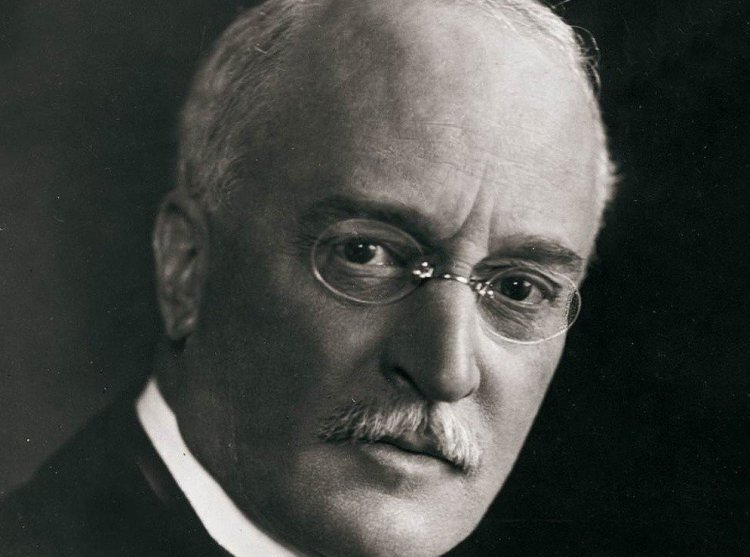Official:
Rudolf Christian Karl Diesel. March 18, 1858 – September 29, 1913. German engineer and inventor. Creator of the diesel engine.
Life and Work:
1. Today, the Bavarian city of Augsburg has a Japanese rock garden. On the lawn in the garden there is a bas-relief, and a memorial inscription reads: “Immortal is your spirit in the lands of Japan.” The garden was founded in 1957 by a Japanese businessman who produces internal combustion engines with compression ignition. These engines were named after their inventor, Rudolf Diesel.
2. It is said that one rainy morning in 1888, young Rudolf Diesel accidentally entered a museum in search of shelter from bad weather. His attention was drawn to an exhibit made in 1833 – a lighter that looked like a syringe with a glass cylinder and a piston. And the young man had a stroke of insight.
3. Diesel’s work resulted in a patent entitled Method of and Apparatus for Converting Heat into Work obtained on February 23, 1893. Then Diesel refined his invention further, and humanity received an economical engine running on fuel that is much cheaper than gasoline.
4. The future benefactor of thrifty motorists was born in Paris, where his father, an immigrant from Germany, owned a small bookbinding shop. The Franco-Prussian war interrupted the well-established life, and Diesel’s family was forced to leave for London, while their son was sent to Augsburg to live with his uncle and aunt.
5. His childless uncle, a professor, eagerly started to educate the nephew, in whom he saw great abilities. And he was not mistaken: Rudolf graduated the non-classical school with honors.
6. At the age of 14, Rudolf wrote a letter to his parents saying that he wanted to become an engineer. And he undertook to fulfill his dream: he entered a technical school in Augsburg. His parents hoped that Rudolf would quickly find a job, but the talented young man decided to continue his education. He was not wrong about himself: Diesel graduated from the Royal Bavarian Technical High School in Munich with the highest results for the entire existence of this educational institution.
7. An excellent graduate was quickly offered a job. His former teacher, the Munich professor Karl von Linde, invited him to Paris to work in a branch of his company that produced refrigeration machines. A year later, Diesel became the director of this branch.
8. It is claimed that it was Professor Linde who got Diesel interested in internal combustion engines. For ten years, Diesel struggled with the problem of increasing their efficiency: he created dozens and hundreds of drawings and calculations, but the absorption engine on ammonia could not surpass the steam engine in efficiency.
9. “It occurred to me that atomized fuel should be injected into compressed hot air instead of ammonia and, as it ignites, expanded in such a way that maximum heat could be put to useful work,” wrote the happy inventor. “My idea is so far ahead of everything that has been created in this field so far that we can safely say that I am the first in this new and most important section of technology on our small globe! I am ahead of the best minds of mankind on both sides of the ocean!” wrote Diesel.
10. The exultation was a little premature. Although Diesel’s invention attracted some interest. The director of the machine-building plant in Augsburg (now it is the famous MAN) let Rudolf Diesel test and develop his ideas, and the well-known industrialist Krupp funded the experiments. Not immediately, but success came: the first operational diesel engine was launched in 1897 and is now on display in the German Museum of Achievements in Science and Technology in Munich.
11. After that, things were not so smooth either: after the first successes, failures came, and after wealth, ruin. The first-generation engines proved to be of little use, and legal disputes with customers and litigations over patents drove Diesel to a psychiatric clinic. Moreover, he turned out to be an awful businessman: he went completely broke in 1913.
12. In that fateful year, on September 29th, he boarded the steamer Dresden in Antwerp to go to London to attend a meeting of the company that manufactured his engines. He never made it to the meeting: Diesel’s coat and hat were found on the deck, while he was nowhere to be found. The body was allegedly found by Belgian fishermen, but a storm prevented them from bringing it ashore. The items gathered by the fishermen were later shown to Diesel’s son Eugene, and he identified them as belonging to his father.
13. In 1978, Rudolph Diesel was inducted into the Automotive Hall of Fame, an American museum founded in 1939 and dedicated to the most famous and influential figures in the automotive industry.






















